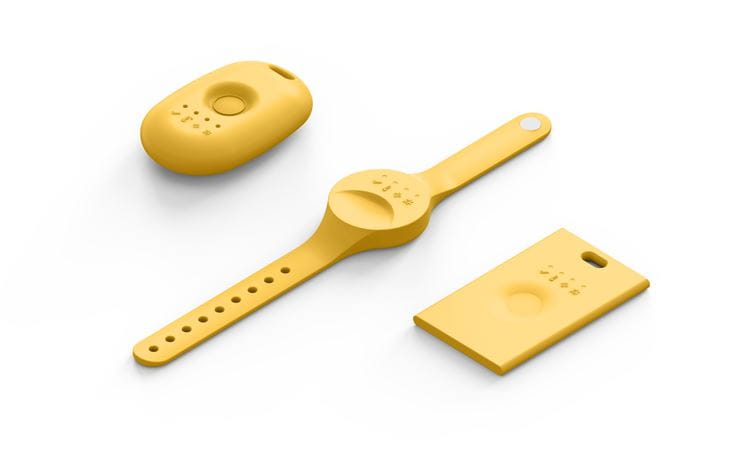Nordic Semiconductor today announces that long-standing customer Estimote is using Nordic’s nRF52840 Bluetooth® LE Systems-on-Chip (SoCs) at the heart of a brand new range of workplace safety wearables Estimote specifically developed to help protect essential workers during the Covid-19 pandemic.
In operation the wearables are worn by everyone within a specific work location such as a hospital, warehouse, delivery depot, farm, pharmaceutical factory, drug or grocery store. This enables the wearable to automatically register via Bluetooth all physically close interactions with co-workers. If one worker is unfortunate enough to develop Covid-19 symptoms this data can be immediately used (via an Estimote-developed cloud dashboard) to identify which employees may have been exposed to the virus and—crucially—the exposure time in minutes and thus the risk of contraction. This enables employers to ensure those at medium to high risk immediately self-isolate as a precaution, while allowing those at low to no risk to continue working. If widescale Covid-19 testing is available in a locality, then all employees could also be tested and everyone testing negative allowed to return to work.
In addition, if a facility is willing (or already has) Estimote Bluetooth beacons installed, Estimote can add what it calls an “indoor GPS” mapping feature. This enables a graphical visualization of all high risk areas within a facility of where a symptomatic individual has been working and for how long to support targeted disinfecting and cleaning operations.
“It’s not a perfect solution but it’s one hundred percent better than no solution,” states Estimote CEO & Co-Founder, Jakub Krzych. “Even with the best will in the world, life consists of human interactions in communal work environments and social distancing can be difficult to maintain at all times. And so there is a risk that essential workers who are already at elevated risk of contracting Covid-19 because they are not on lockdown at home, could spread the virus to co-workers and potentially bring down an entire essential operation.
“I have to stress, however, that this solution was designed with privacy in mind and anonymizes as much data as possible. While it may tell an employer how many minutes an employee was close to another, it won’t tell them where and when, for example. And the indoor GPS feature may show where a particular employee spent their time at work, but not who they were with. For this solution to work every member of a workforce has to feel comfortable using it and guaranteeing their privacy is the only way to do this.”
The Estimote wearables will be made available in one of three form factors—pendant, wristwatch and ID card—and all feature wireless charging, panic alarm button, and LED status indicators. Estimote says it it has already started manufacturing in Poland, Europe, and shipping to customers, so welcomes further enquiries.
“The whole world is battling against a single invisible enemy right now in the form of the Covid-19 virus,” concludes Geir Langeland, Nordic Semiconductor Director of Sales & Marketing. “And in every country and in every geographical location that means societies facing the same kinds of problem including coping with lockdowns. What’s keeping us all functional right now is a minority of essential workers who are taking elevated risks to ensure a majority can stay safely at home until the pandemic subsides. I commend those brave essential works and anything that can be done to help safeguard them at this critical time.”

